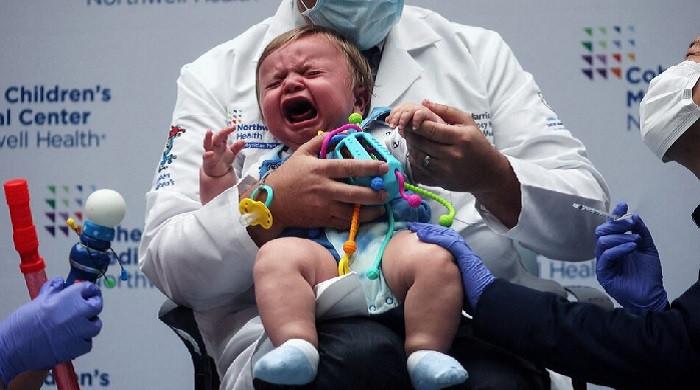The global levels of infants vaccination stabilized after the narrowing during the cocvid crisis, said the UN on Tuesday, but he warned that disinformation and drastic aid cuts deepened dangerous coverage deviations and put millions in danger.
In 2024, 85% of infants worldwide, or 109 million, had received three doses of diphtheria, tetanus and whooping (DTP), the third dose serving as a key marker for the coverage of global immunization, according to data published by health agencies and United Nations children.
This marked an increase in a percentage point and one million more children covered a year earlier, in what agencies described as “modest” gains.
At the same time, nearly 20 million infants missed at least one of their doses of DTP last year, including 14.3 million so-called children “who never received a single blow.
While a slight improvement compared to 2023, when the United Nations said that there were 14.5 million children in zero doses, it was 1.4 million more than in 2019 – before the cocovio pandemic ravages on global vaccination programs.
“The good news is that we have managed to achieve more children with vital vaccines,” said UNICEF chief Catherine Russell, in a joint statement.
“But millions of children remain without protection against avoidable diseases,” she said.
Although the lack of access was the main cause of low coverage worldwide, agencies have also underlined the threat of disinformation.
The decline in “hard evidence regarding the safety of vaccines” contributes to dangerous gaps and epidemics, the head of the vaccine told journalists.
Experts sounded the alarm in the United States, in particular, where the Secretary of Health, Robert F. Kennedy Jr., himself has long been accused of having propagated the disinformation of the vaccines, including on the measles vaccine, even though the United States is struggling with its worst epidemic of measles in 30 years.
Last year, 60 countries experienced significant and disruptive epidemics of highly contagious disease, doubly 33 in 2022, according to the report.
It is estimated that two million more children worldwide were vaccinated against measles in 2024 than the previous year, but the world coverage rate remained well below the 95% necessary to avoid its spread.
On a positive note, Tuesday’s report showed that coverage of vaccines against a range of diseases had increased last year in the 57 low -income countries supported by the GAVI Alliance Vaccination.
“In 2024, low -income countries protected more children than ever,” said Gavi Sania Nishtar chief.
But the data also indicated that “signs of slipping” emerge in higher and high income countries where coverage was previously at least 90%.
“Even the smallest drops in immunization coverage can have devastating consequences,” said O’Brien.




